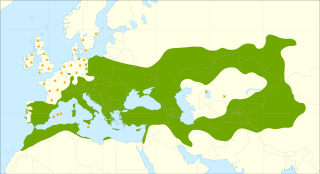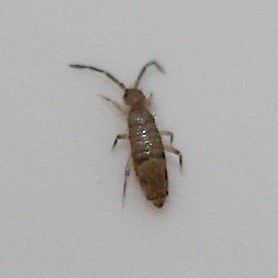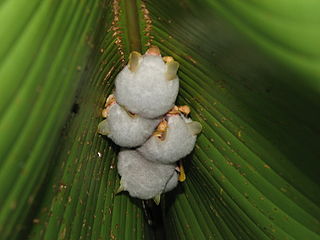
The bird family Tytonidae, which includes the barn owlsTyto and the bay owlsPhodilus, is one of the two families of owls, the other being the true owls or typical owls, Strigidae. They are medium to large owls with large heads and characteristic heart-shaped faces. They have long, strong legs with powerful talons. They also differ from the Strigidae in structural details relating in particular to the sternum and feet.

Quercus alba, the white oak, is one of the preeminent hardwoods of eastern and central North America. It is a long-lived oak, native to eastern and central North America and found from Minnesota, Ontario, Quebec, and southern Maine south as far as northern Florida and eastern Texas. Specimens have been documented to be over 450 years old.

The white wagtail is a small passerine bird in the family Motacillidae, which also includes pipits and longclaws. The species breeds in the Palearctic zone in most of Europe and Asia and parts of North Africa; it also has a toehold in western Alaska as a scarce breeder. It is resident in the mildest parts of its range, but otherwise migrates to Africa. In total, there are between 9 and 11 subspecies of M. alba; in Ireland and Great Britain, the black-backed subspecies known as the pied wagtail predominates.

The great egret (Ardea alba), also known as the common egret, large egret, or great white egret or great white heron, is a large, widely distributed egret. The four subspecies are found in Asia, Africa, the Americas, and southern Europe. Recently, it has also been spreading to more northern areas of Europe. Distributed across most of the tropical and warmer temperate regions of the world, it builds tree nests in colonies close to water.

Jessica Marie Alba is an American actress, businesswoman, and entrepreneur. She began her acting career at age 13 in Camp Nowhere (1994), followed up by The Secret World of Alex Mack (1994), and rose to prominence at age 19 as the lead actress of the television series Dark Angel (2000–2002), for which she received a Golden Globe nomination.

Salix alba, the white willow, is a species of willow native to Europe and western and central Asia. The name derives from the white tone to the undersides of the leaves.

Agave americana, commonly known as the century plant, maguey, or American aloe, is a flowering plant species belonging to the family Asparagaceae. It is native to Mexico and the United States, specifically Texas. This plant is widely cultivated worldwide for its ornamental value and has become naturalized in various regions, including Southern California, the West Indies, South America, the Mediterranean Basin, Africa, the Canary Islands, India, China, Thailand, and Australia.

Populus alba, commonly called silver poplar, silverleaf poplar, white poplar, or abele is a species of poplar, most closely related to the aspens. It is native to a region spanning from the Atlas Mountains of Africa, through most of South and Central Europe, into Central Asia; it has been introduced to many temperate, moist regions worldwide. It grows in moist sites, often by watersides, in regions with hot summers and cold to mild winters.

The white tern or common white tern is a small seabird found across the tropical oceans of the world. It is sometimes known as the fairy tern, although this name is potentially confusing as it is also the common name of Sternula nereis. Other names for the species include angel tern and white noddy in English, and manu-o-Kū in Hawaiian. in the Cook Islands, it is known as the kakaia. The little white tern, previously considered a subspecies of the white tern, is now recognised as a separate species.

Erica vagans, the Cornish heath or wandering heath, is a species of flowering plant in the family Ericaceae, native to Ireland, Cornwall, western France and Spain. It is a vigorous, spreading, evergreen heather reaching 75 cm (30 in) tall and wide, with pink flowers borne in racemes 14 cm (6 in) long in summer and autumn. The Latin specific epithet vagans literally means "wandering"; in this context it means "widely distributed".

Entomobryidae, sometimes called "slender springtails", is a family of springtails characterised by having an enlarged fourth abdominal segment and a well-developed furcula. Species in this family may be heavily scaled and can be very colourful. The scale-less Entomobryidae are commonly caught in pitfall traps around the planet, and also occur in canopy faunas high up in trees. There are more than 1700 described species in Entomobryidae.

The Honduran white bat, also called the Caribbean white tent-making bat, is a species of bat in the family Phyllostomatidae. It is the only member of the genus Ectophylla. The genus and the species were both scientifically described for the first time in 1892. It has distinctive, entirely white fur, which is only found in six of the roughly 1,300 known species of bat. It constructs "tents" out of understory plant leaves by strategically cutting the leaf ribs with its teeth; it roosts in these tents during the day. It is a specialist frugivore, consuming almost exclusively the fruits of one species of fig. Females can likely become pregnant twice per year, giving birth to one offspring at a time.

Pisonia is a genus of flowering plants in the four o'clock flower family, Nyctaginaceae. It was named for Dutch physician and naturalist Willem Piso (1611–1678). Certain species in this genus are known as catchbirdtrees, birdcatcher trees or birdlime trees because they catch birds. The sticky seeds are postulated to be an adaptation of some island species that ensures the dispersal of seeds between islands by attaching them to birds, and also allows the enriching of coralline sands. These island species include P. brunoniana of Australasia and Polynesia and P. umbellifera, which is widespread in the tropical Indo-Pacific region.
Pseudosinella spinosa is a species of slender springtails in the family Entomobryidae.

Neanura is a genus of springtails in the family Neanuridae. There are more than 30 described species in Neanura.
Orthopodomyia is a genus of mosquitoes in the family Culicidae. There are at least 40 described species in Orthopodomyia.
Pseudosinella rolfsi is a species of slender springtail in the family Entomobryidae.
Pseudosinella violenta is a species of slender springtail in the family Entomobryidae.
Davey Alba is a technology reporter who covers Big Tech for Bloomberg News, after previously reporting on online disinformation for The New York Times.

Hypochlora alba, known generally as mugwort grasshopper, is a species of spur-throated grasshopper in the family Acrididae. Other common names include the sage grasshopper and cudweed grasshopper. It is found in North America. It feeds exclusively on Artemisia ludoviciana.














